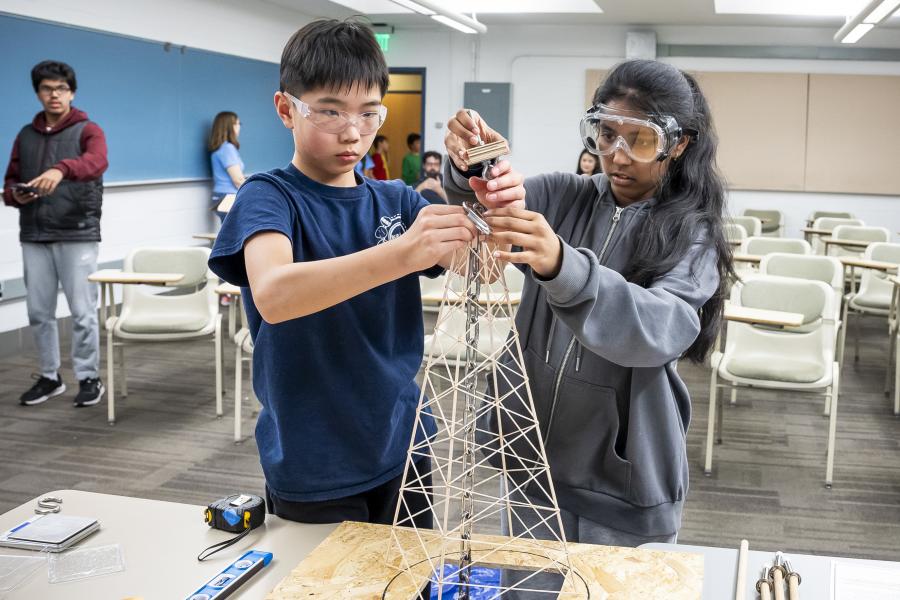The day before Super Bowl LVIII in Las Vegas, a less intense and much friendlier spectacle unfolded on the Homewood campus in Baltimore: the fifth annual Maryland Science Olympiad Invitational at Johns Hopkins.
Held Saturday, the event—a practice run for the regional and state Olympiad tournaments to be held in March and April—brought several hundred middle school students and their coaches and mentors from across Maryland, Virginia, and Washington, D.C., to Johns Hopkins for a day filled with science-related contests, from designing rollercoasters and building towers to testing their knowledge of microbes.
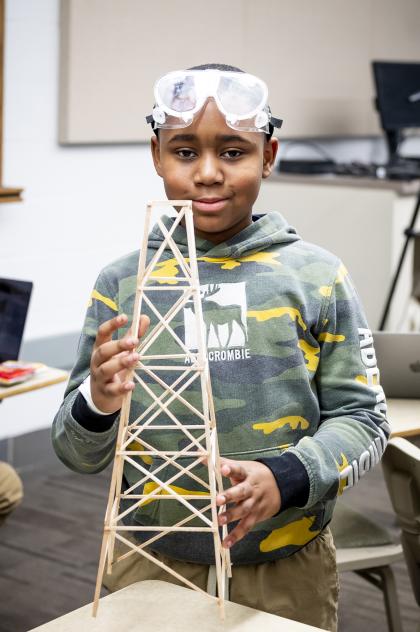
Image credit: Larry Canner for Johns Hopkins University
"We haven't practiced 'tower' before," said Criselda Belarmino, teacher-mentor for the Hazelwood Elementary/Middle School team from northeast Baltimore. The tower in question—a pyramid-like structure made of lightweight wood—had to remain standing despite supporting the weight of a bucket of sand hanging beneath it. Hazelwood's did—but the team ran out of time before they could fill the bucket. "They did a great job, though," said Belarmino. "We tried it this morning and the tower broke in two pieces."
Hazelwood's experience illustrated the purpose of the event—learning the nuances of the challenges so the teams would be prepared when it counts. The teams didn't come in completely cold, though: Eight teams, including Hazelwood, had been mentored by Hopkins students before the event. About 65 JHU undergraduates have gone to 22 Baltimore City schools once a week since October under the auspices of a Whiting School of Engineering Center for Educational Outreach initiative.

Image credit: Larry Canner for Johns Hopkins University
"I did Science Olympiad when I was in high school," said Amanda Valledor, Engr '14, the center's STEM Outreach Program manager overseeing the Charm City STEM League program. "It was one of the motivating factors that influenced me going into science and engineering."
Previously a flagship program at JHU's Center for Social Concern, the mentorship initiative is in its first year under the umbrella of the Whiting School of Engineering and, according to Valledor, attracts mentors who were once participants in their local Science Olympiad programs.
"The idea is to take their expertise and give back to the community," she said.
One such Hopkins mentor is Mason Holmes, a sophomore majoring in mechanical engineering at the Whiting School of Engineering. In his case, giving back meant volunteering at Roland Park Middle/Elementary School and helping to develop and distribute kits for the wheeled vehicle event, which entails propelling a lightweight, four-wheeled car past two set distance lines, with bonus points for navigating between a gate made of soda cans.
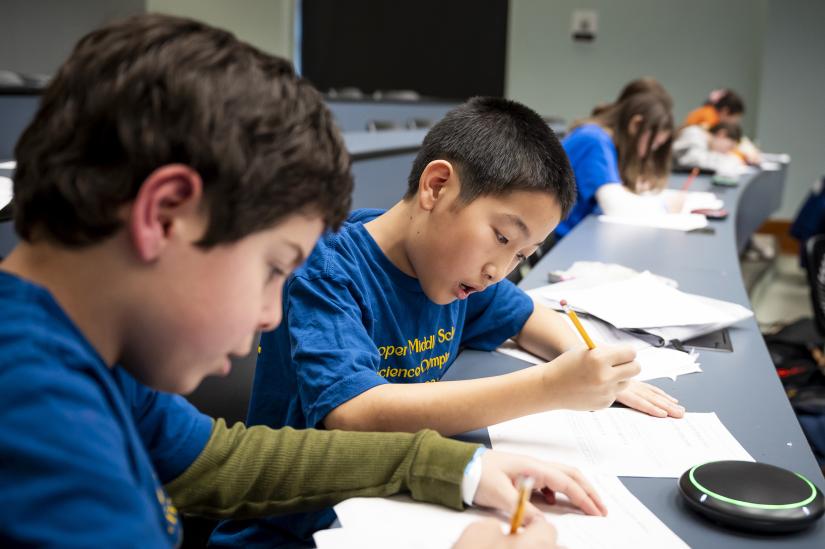
Image credit: Larry Canner for Johns Hopkins University
"It's a very complicated event, and a lot of teams are trying it for the first time," Holmes said. "It's a necessary thing to have someone to guide them through the design process." The Hopkins-mentored team from Clifton Park's Fort Worthington Elementary/Middle School tweaked its design until the day of the event. The team had originally planned to use a mousetrap as their main source of propulsion but could not determine whether that was legal. On the day of the invitational, they opted to go with a rubber band. In the first round, the team made it past the second line, but not through the gates. The team members then strategized to straighten things out for the next round.
"Let me tell you something interesting," team member Gabriel said. "I knew nothing about this car until today and we still got past the line."
The team made it through the gates in round two and the school ended up taking first place in their league.
Competitive events weren't the Olympiad's only draw—there was also the STEM Expo, a science fair of sorts taking up two floors of Hodson Hall. There, competitors, families, and the public could see things like zebrafish egg development via microscopes, courtesy of BioEyes, and a concoction known as "elephant toothpaste"—comprising hydrogen peroxide, soap, food coloring, and yeast, which combined to erupt out of a water bottle.
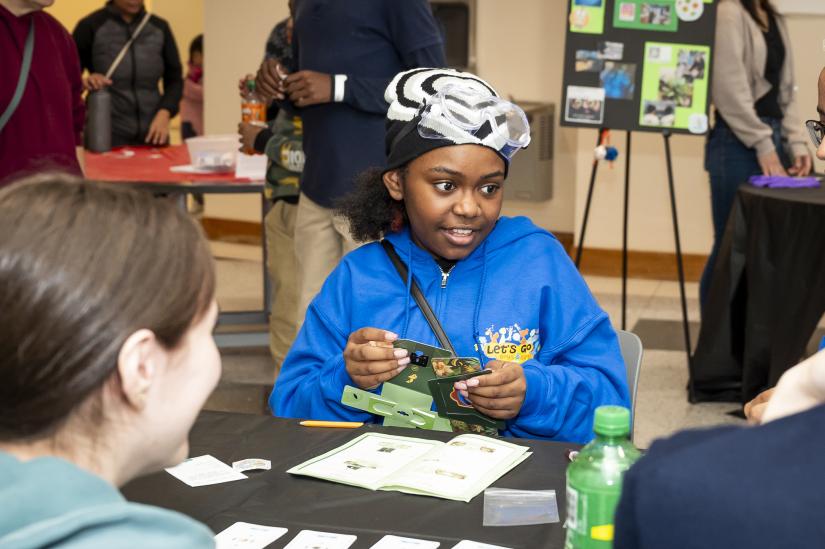
Image credit: Larry Canner for Johns Hopkins University
Kate McGuire, Bus '92 (MBA), director for the Baltimore City chapter of the Maryland Science Olympiad, was pleased by the high turnout.
"We got more kids than last year, and for many it's their first tournament," she said. "We had more than I expected."
Other Baltimore City schools that received mentoring from Hopkins students were Hampstead Hill Academy, Lakeland Elementary/Middle School, Lillie May Carroll Jackson Charter School, Southwest Baltimore Charter School, Thomas Jefferson Elementary/Middle School, and Westport Academy. Nearly twice as many Baltimore City Public Schools teams were able to participate in this year's event as did last year, thanks in part to transportation assistance provided through a grant from the Abell Foundation.
Science Olympiad is the nation's largest team STEM competition for middle and high schoolers, involving roughly 7,000 teams across all 50 states. Started in 1984, the competition comprises 23 events that cover nearly every area of science—from earth science to cell biology to engineering. Each team member typically competes in three or four events based on their skills or interests. The competition is held on a regional, state, and national level, with qualifying competitions at each to advance. The Maryland Science Olympiad State Tournament will be held on the Homewood campus April 13.
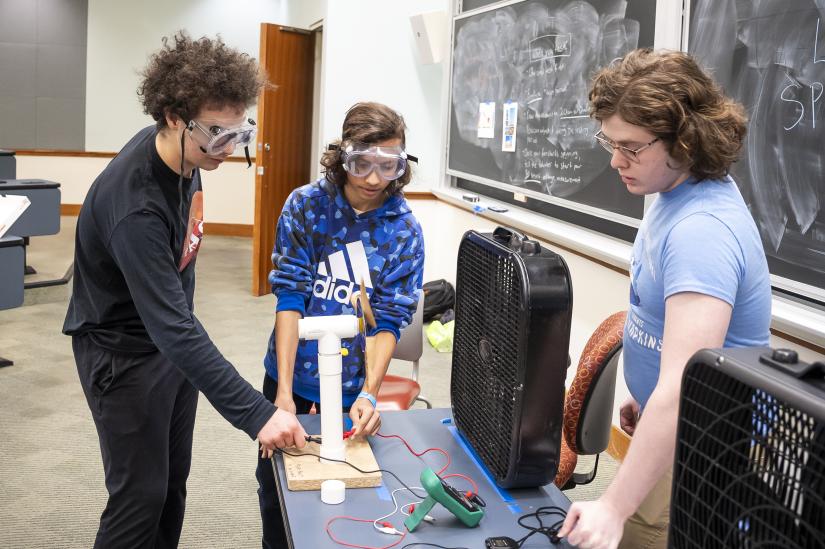
Image credit: Larry Canner for Johns Hopkins University
Posted in Student Life, Community




